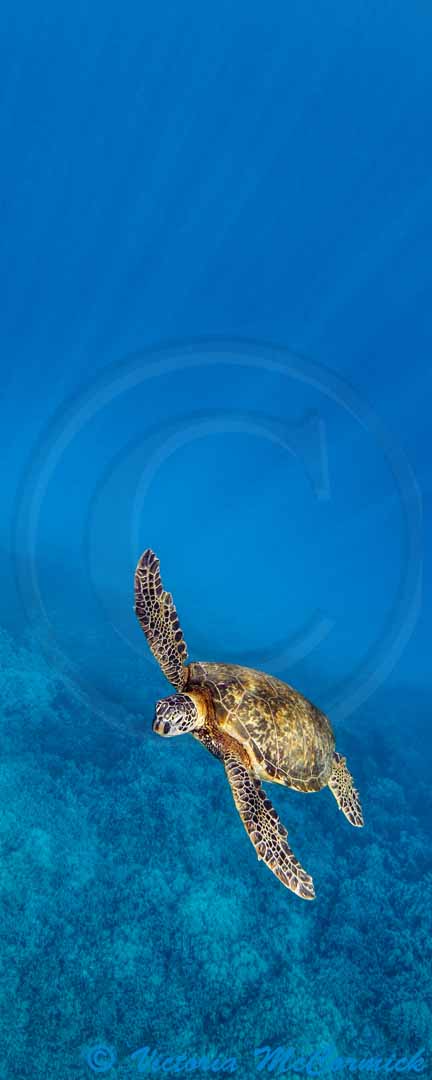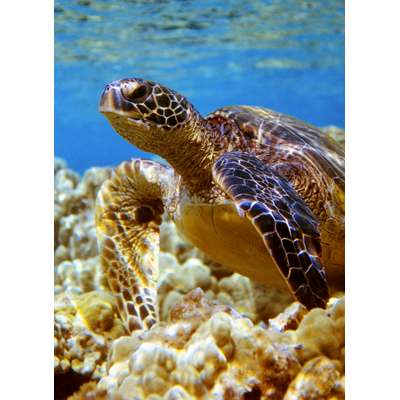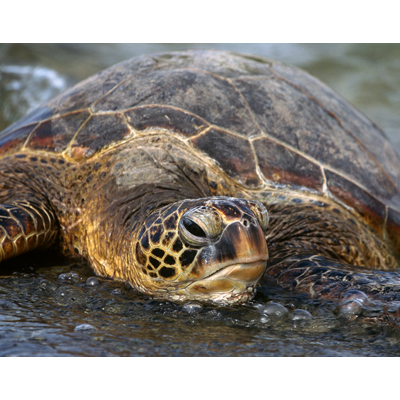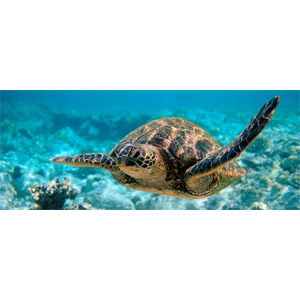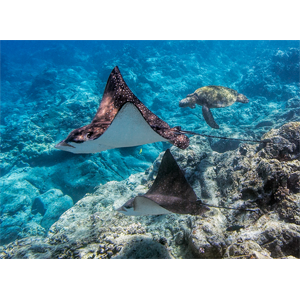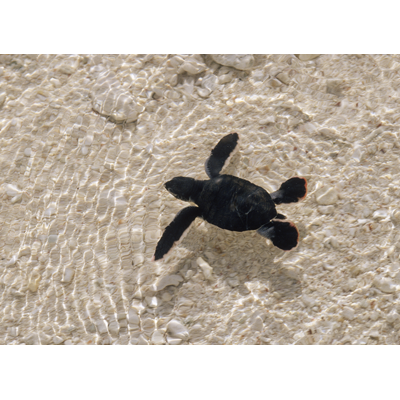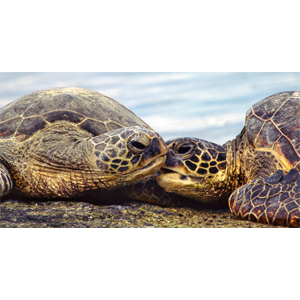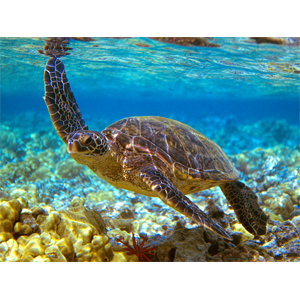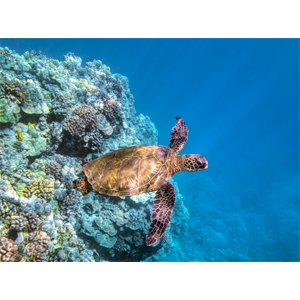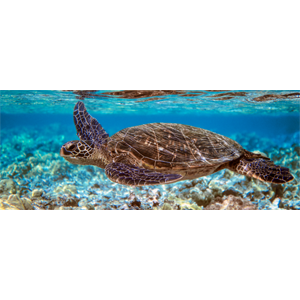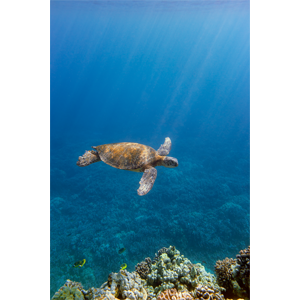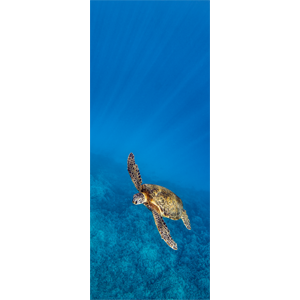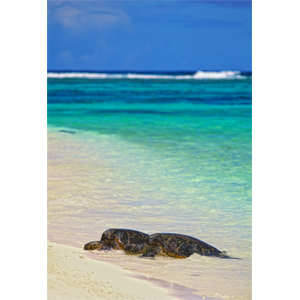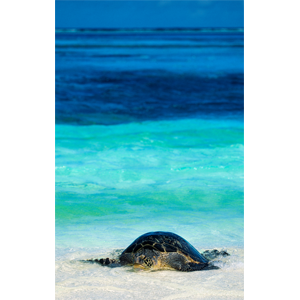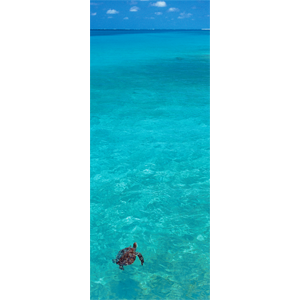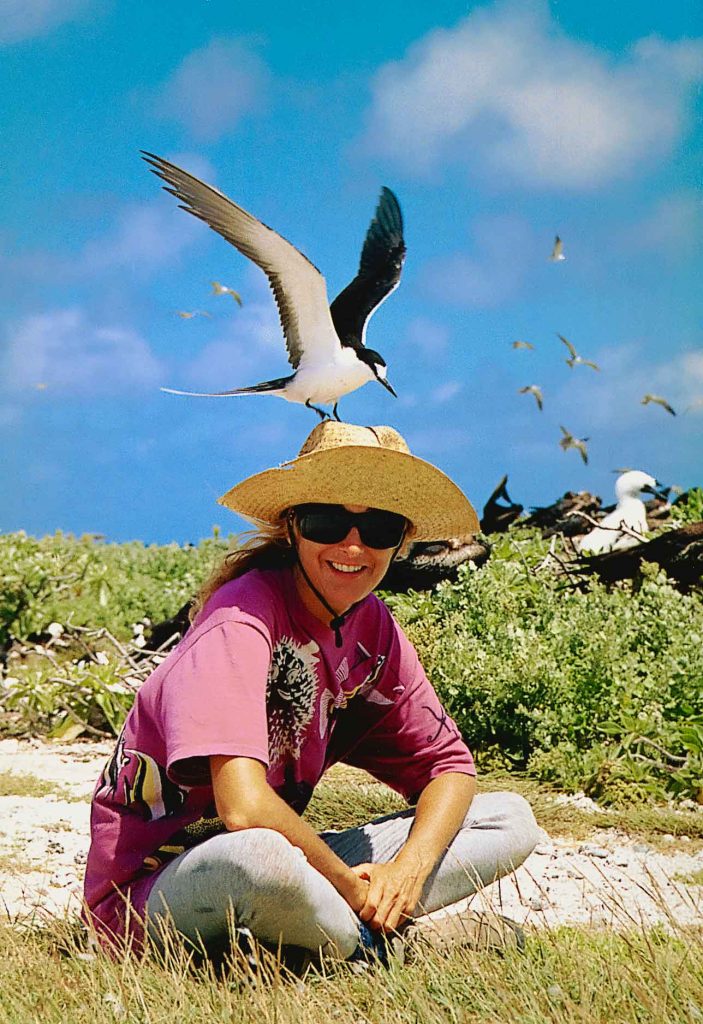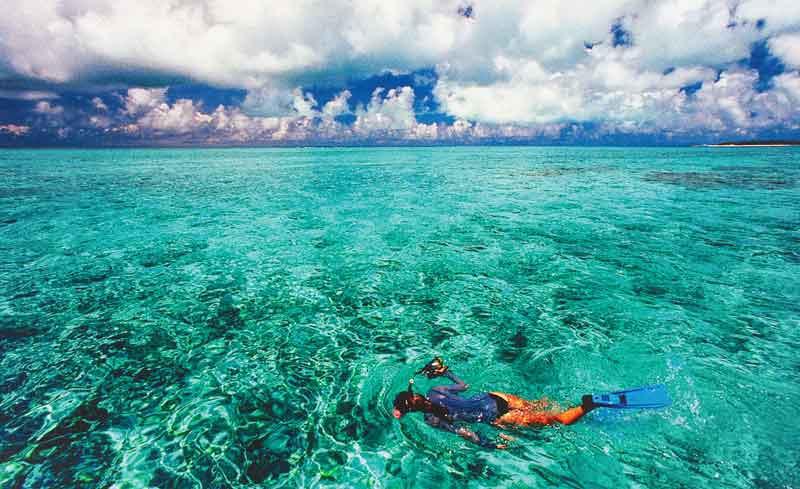About Watermark
The image you see on this site has a watermark overlay on the image and text added to help limit the unauthorized use of Victoria's work. Thanks for your understanding.
Freedom Flight
Hawaiian Green Sea Turtle
Hawaiian Name: Honu
Protected by the Endangered Species Act
Slipping through the looking glass from Hawaii’s tropical shoreline into the warm ocean water sometimes gives you a chance to see these ancient ones. As they swim by they seem to be in flight. One hundred eighty million year old green sea turtle fossils show that this is truly an ancient species. In Hawaii, most female Green Sea Turtles nest on the same small islands at French Frigate Shoals. Like many generations before, they travel hundreds of miles from their feeding grounds in the main islands to the Northwestern Hawaiian Islands’ nesting sites. After mating, the female leaves the comfort of the ocean, hauls herself across a pristine beach and digs a nest pit slightly larger than herself. Then with her hind flippers she digs a two foot hole for her 50 to 150 eggs. She covers her nest with sand before returning to the ocean. She will not mate again for two or three years.
In two months the baby turtles hatch and work together as a group by scrambling on top of each other to lift themselves to just below the surface of their sandy nest. At dusk, the two inch babies burst from their nest and scamper across the beach into the ocean – surviving predators as best they can. They quickly swim straight out into the ocean to their unknown nursery where they eat many kinds of small marine life. When the baby turtles reach 15 to 18 inches long, they come close to Hawaii’s islands and begin feeding in algae rich pastures.
All ages spend the winter and spring months in these shallow feeding grounds throughout the islands eating sea grasses and seaweed. Green Sea Turtles often come ashore to bask in the sun for hours.
It is of interest to know that Green Sea Turtles:
- Cannot pull their heads inside their shells.
- See well underwater but not above.
- Shed thick salty tears to cleanse and remove extra salt from their bodies.
- Have no voice but can hear.
- Can grow to lengths of 3-4 feet and weigh up to 400 pounds.
- Have an excellent sense of smell.
- Reach sexual maturity around 25 years old and can possibly live up to 80 years.
- The long tails of the males distinguish them from the females.
- Can swim 20 miles per hour for short distances.
In the summertime when the sun is at its highest, some adult females and most of the males begin their journey back to the Northwestern Hawaiian Islands. Some swim as far as 800 miles or more in their pilgrimage to complete the journey of the Honu.
© 2005 Victoria McCormick
Shopping Options:
Sizes available:
- 6x12 Faux matted print. $28.
- 6x15 Luster Print. $38.
- 8×24 Watercolor print in 12×28 presentation mat. $190.
- 16×40 Watercolor or Canvas Giclee print. $1,380.
Prints of this photograph can be purchased by clicking below!
Other print options
-
Canvas and Watercolor Prints available in custom sizes - See ordering page for more information.
- Metal Prints also available - See ordering page for more information.

